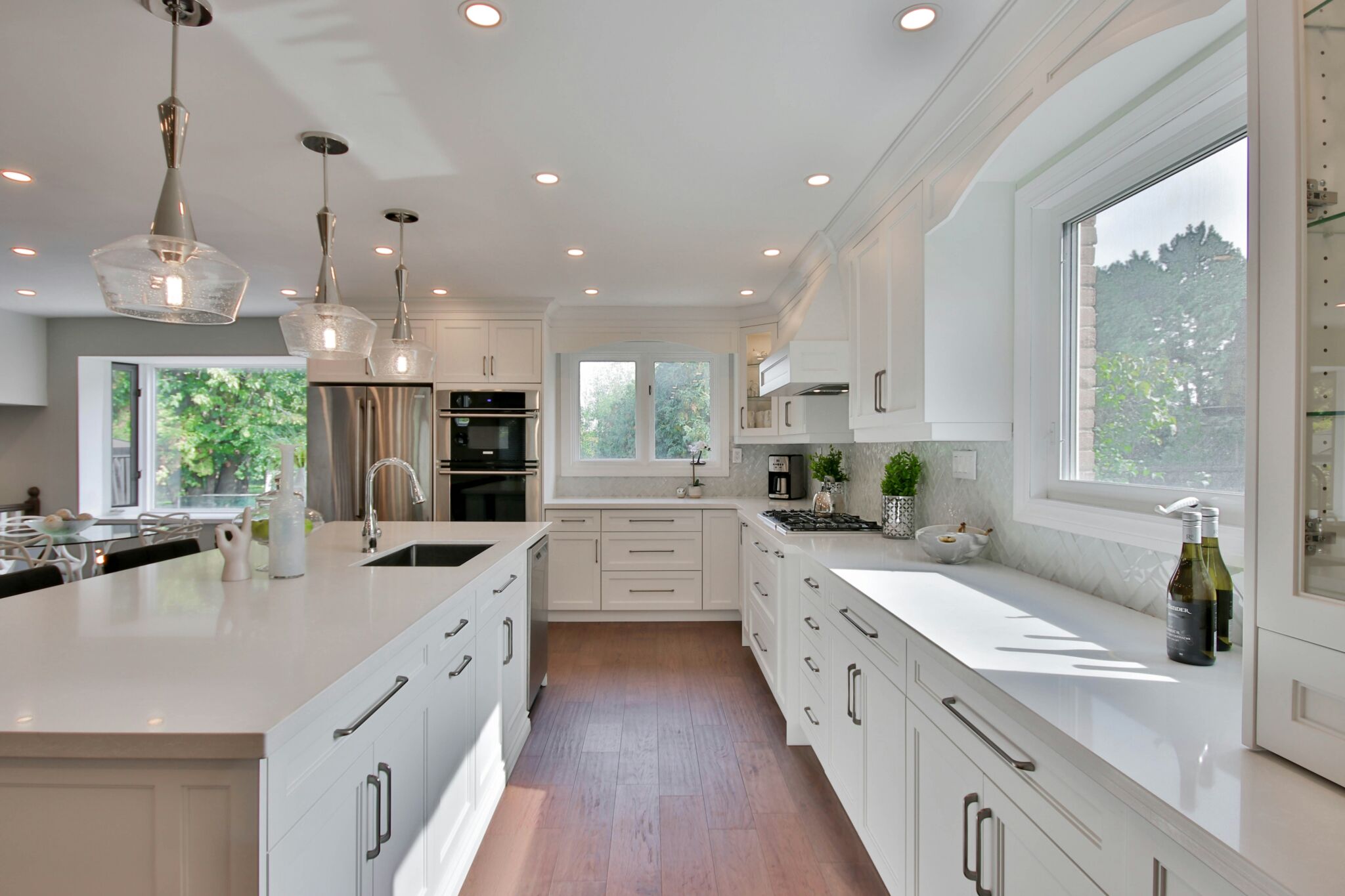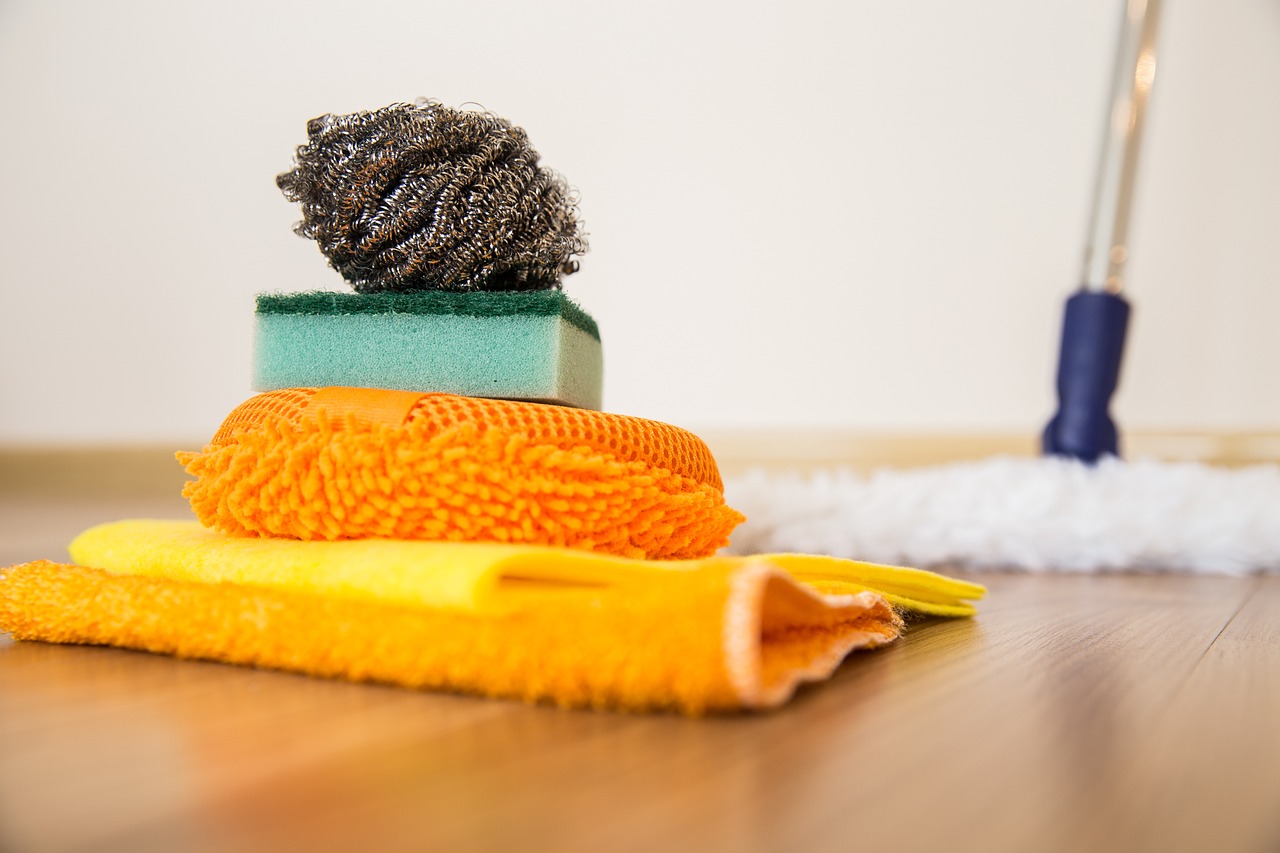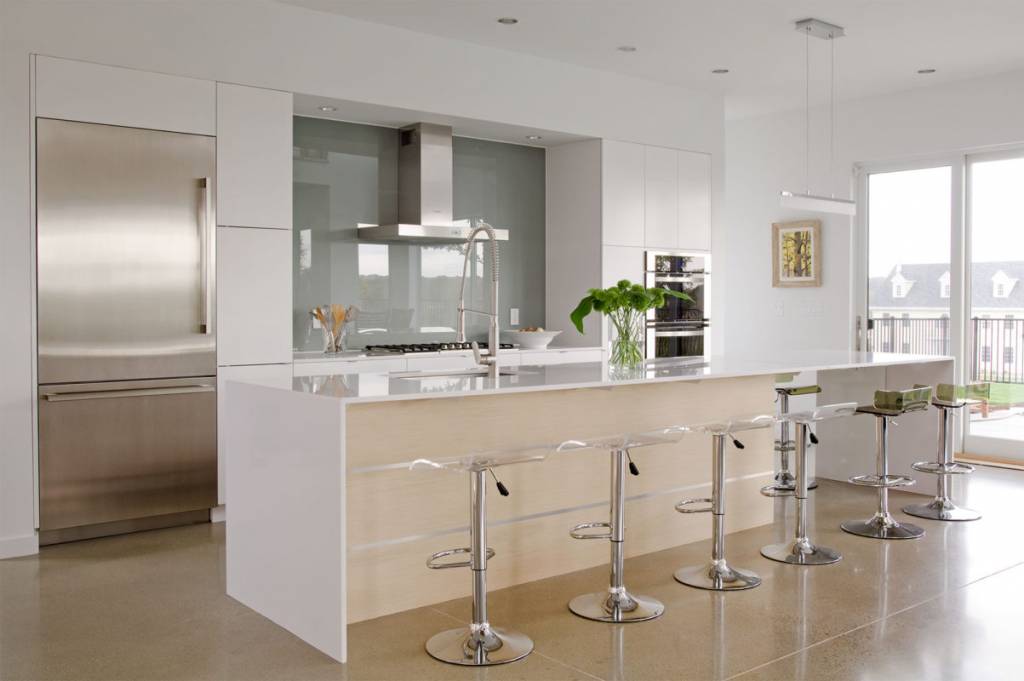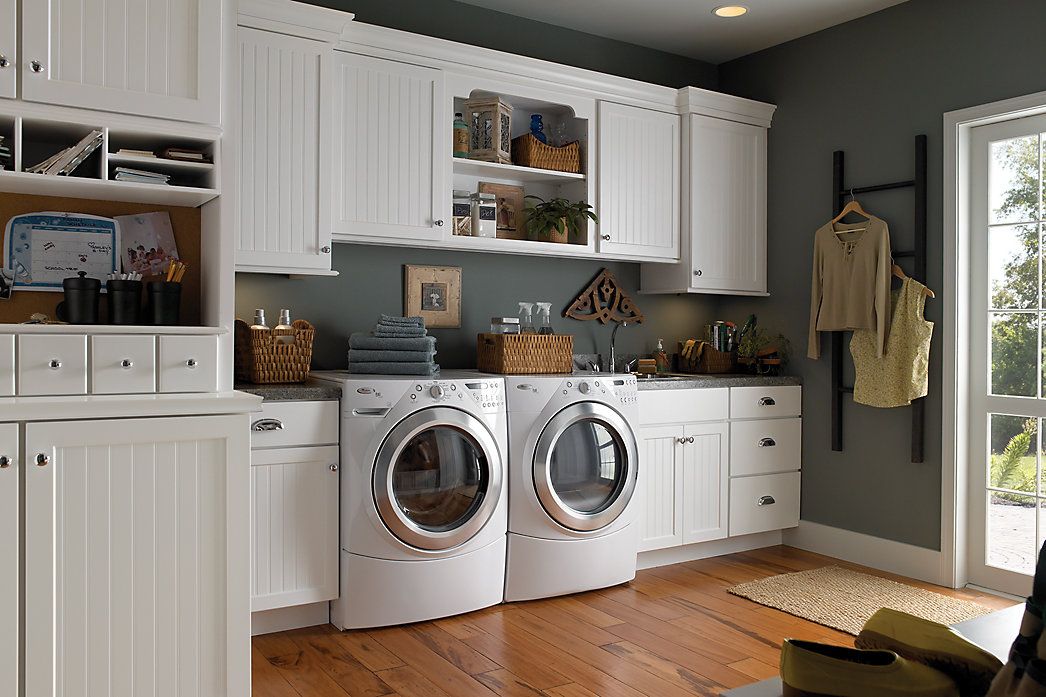With proper cabinet care and maintenance, your new cabinetry should provide a lifetime of use and satisfaction. Keep them looking new and protect your investment with these cleaning suggestions, including soaps, materials, and what to avoid.
The beauty of wood is in the variation in graining and hue. Because wood is a natural product, it has inherent variation. This variation includes many natural characteristics as a result of tree growth patterns, as well as differences in wood color and grain due to variations in forest growing conditions.
Upon installation, wipe the cabinets clean with a soft, damp cloth and dry immediately with another clean, soft cloth. Always wipe in the direction of the wood grain. Apply a thin coat of high quality polish. Choose a polish that does not contain silicone or wax, and follow the manufacturer’s directions for application. A high-quality polish will aid in protection from minor scratching, staining and excessive moisture.
 Basic Cleaning
Basic Cleaning
Routine cleaning with the appropriate materials will help prevent long-term damage to your finish. Wipe with a dampened cloth and promptly wipe dry. Use a clean cloth dampened with a solution of mild dish washing liquid and water to remove oil, grease, food residue or daily spills.
Do not use your dishcloth to clean the cabinets as it may contain remnants of detergents and grease that can have a harmful effect on the finish. Avoid using cleaners that contain the following: bleach, ammonia, citrus products, mineral oil, organic solvents; harsh detergents, strong soaps, abrasive cleansers; or self-polishing waxes (particularly products that contain silicone).
We do not recommend using paste wax because of the “build up” and “yellowing” effects over time. We do recommend the use of a high-quality cream furniture polish.
Many substances become difficult to remove and may stain or cause other damage upon prolonged contact. If a spill occurs, wipe it promptly with a damp cloth or sponge and dry the surface immediately. Use a blotting action rather than a wiping action to remove the substance.
For stubborn spots and stains, mix baking soda and water to create a paste. Use a soft bristle brush to gently rub the spot in a circular motion. The paste will be slightly abrasive, so work carefully, pressing very lightly. Rinse and dry with a soft cloth. Repeat the process as long as you’re making progress. If the stain remains, use undiluted household bleach; the label should read 5% solution of sodium hypo chlorite. Take special care to protect your eyes, skin and clothing. Apply the bleach using a wet sponge or paper towel, place it on the stain and let sit for no longer than one and a half minutes. Rinse repeatedly with warm water and dry with a soft cloth.
Avoid Moisture and Excessive Temperature Swings
Excessive moisture is one of the worst enemies of any finish. Cabinetry near the sink and dishwasher, and baseboards are most susceptible. Dry off any areas immediately where water has spilled. Avoid draping dish towels or other wet items over doors or placing coffee makers where steam vents directly onto cabinet surfaces.
Extremes in temperature and humidity can cause wood to expand and contract, swell or warp, and dry out– possibly damaging the finish of your cabinetry. It is important to control the temperature and humidity in your home all year long. You should allow minor warping to go through one heating cycle before considering replacement.
Many of the internal environmental issues that affect human comfort also contribute to a wood healthy environment. Specifically, controlled temperature and humidity with minimal changes from day to day and season to season will ensure your comfort and they will ensure the stability and life of your wood cabinetry.
 Avoid Exposure To Harsh Cleaners and Waxes
Avoid Exposure To Harsh Cleaners and Waxes
Harsh cleaners can damage the finish of your cabinetry. Avoid cleaners containing ammonia, bleach, citric acid (including orange and lemon oil) and organic solvents.
Most common self-polishing waxes can damage your finish. Take care to use only high-quality cream furniture polishes available from high-end furniture or paint stores.
Use felt or clothe under plastic or rubber objects as their ingredients may react with wood counter tops.
Avoid products containing aggressive acids or abrasives as they may cause damage to laminate finishes (Lime-A-Way, Soft Scrub, Tilex, etc.).
Avoid abrasive cleansers and cleaning tools. Some “stiff” paper towels may leave tiny scratches that dull the surface. Always use a soft cloth when cleaning laminate surfaces. Never use a laminate counter top as a cutting surface. Use a chopping block when cutting to avoid chipping and scratching. Fine scratches may be covered with a light spray furniture polish.
Tips For Laminate Products
With proper care, laminate products will last a lifetime. Generally, a damp sponge is all you need for every day maintenance of laminate surfaces.
For more information on proper cabinet care and maintenance, visit Crystal Cabinet Care.
[© 2014 BKC Kitchen and Bath]








